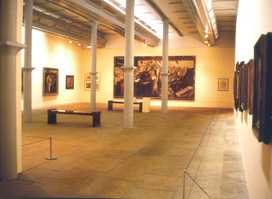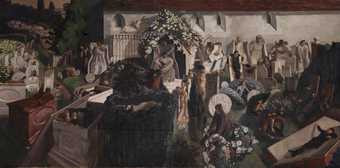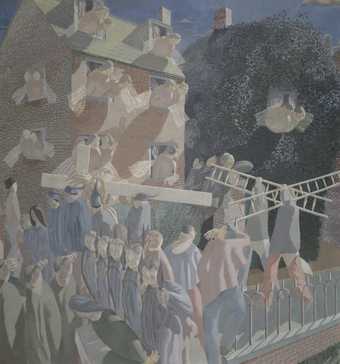
Stanley Spencer Tate Liverpool Exhibition
For Stanley Spencer, love was like imagination. It could transform the everyday world into 'a sort of heaven'.
Love is the essential power in the creation of art and love is not a talent. Love reveals and more accurately describes the nature and meaning of things than any mere lecture on technique can do.
This display shows the wide range of Spencer's work and allows the viewer to decide how far his religious, portrait and landscape paintings belong together. Spencer imagined a home for them all in a 'Church-House' which was never built. He believed the congregation of his pictures would celebrate the 'marriage or spiritual union' between 'what in me has been revealed and what outside of myself has revealed it'. His complex vision was the source of both frustration and exhilaration.
Spencer's involvement in the war marked the end of this early visionary period:
My ideas were beginning to unfold in fine order when along comes the war and smashes everything. When I came home (from the war) the divine sequence had gone. I just opened a shutter in my side and out rushed my pictures anyhow. Nothing was ever the same again.
In 1920 Spencer embarked on a series of paintings depicting Christ's Passion - the events leading up to the crucifixion. In Christ Carrying the Cross 1920, Spencer wanted to 'take the inmost of one's wishes, the most varied religious feeling in one's thought, and to make it an ordinary fact of the street like the edge of the roof.
Throughout his life Spencer painted landscapes. He said he had never intended to be a landscape painter, doing them mainly to earn money. It is ironic that his landscapes were always popular since he seldom enjoyed painting them. It irritated him that they sold well when his other kinds of pictures were sometimes ridiculed or misunderstood.
I have more or less only been a camera: a camera that had some inkling of what I liked...
This display also represents the different kinds of portraits which Spencer produced throughout his life. He made his first oil self-portrait in 1913 - a larger than life depiction of youthful determination and confidence. His last self-portrait, painted in 1959, shows the artist at the end of his life still looking intently at himself. Spencer wrote, 'I feel all the time how much my shows need these nudes'. He planned to give them a room to themselves, but also liked to imagine them hung alongside his other work, to show 'the variety which is so refreshing'.



